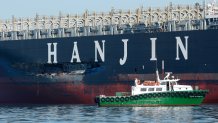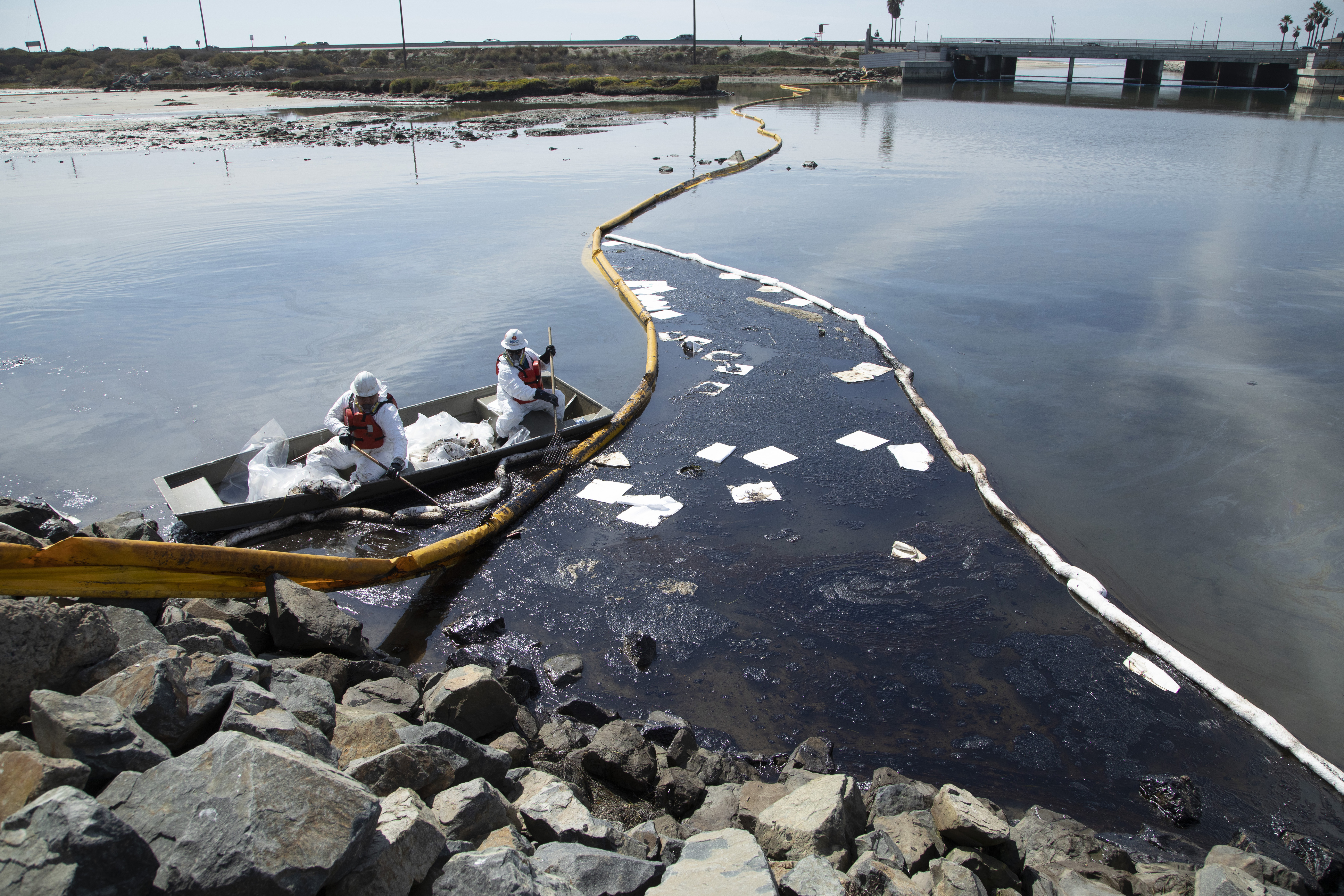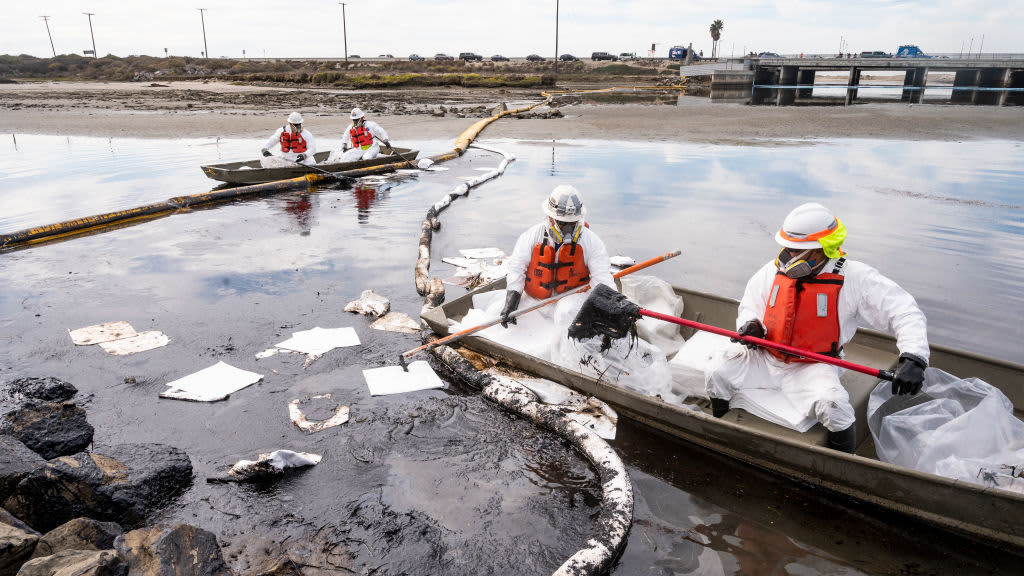Beaches are still closed, and investigations and cleanup efforts are still underway, after a pipeline leak off the coast of Orange County dumped at least 126,000 gallons of oil into the Pacific Ocean last weekend.
California has a long association with oil spills, in part because the state sits on an ocean of it. West Los Angeles and Inglewood, for example, were filled with oil rigs in the mid 1920s during the jazz era.
That all took place after the largest oil spill in American history: the Lakeview Gusher in Kern County, which lasted 18 months and spewed 378 million gallons of oil into the environment and created a lake of oil 100 feet deep.
That spill was over 100 years ago, in 1910. But recent oil spills from oil platforms remain a large problem.
The California Coastal Commission, the state agency that "plans and regulates the use of land and water in the coastal zone," according to its website, compiled a list of five large oil spills in the state that took place in recent memory.
PHOTOS: Huntington Beach Oil Spill Causes Massive Ecologic Damage
1969 Union Oil Rig Spill
On Jan. 28, 1969, Union Oil's Platform "A" drilling rig in Santa Barbara experienced a well blowout while drill bits were being changed.
A mixture of "oil, gas and drilling mud roared up the drill casing and spewed out onto the platform," according to the National Oceanic and Atmospheric Administration, dumping 4.2 million gallons of crude oil into the ocean.
Get a weekly recap of the latest San Francisco Bay Area housing news. Sign up for NBC Bay Area’s Housing Deconstructed newsletter.
That oil spread over 300 miles along the California coast.
The leak was plugged on Feb. 7, but natural faults several hundred yards from the platform leaked oil until December of that year.
Cleanup took significantly longer in 1969 without the tools and technology available today, according to NOAA. The spill was one of the incidents that prompted the modern environmental movement, and was the first use of the National Pollution Contingency Plan instituted by President Lyndon B. Johnson.
1971 San Francisco Bay Spill
On Jan. 18, 1971, two tank vessels bumped into each other near the Golden Gate Bridge in San Francisco. After the Arizona Standard struck the Oregon Standard, the ships stayed stuck together while the Oregon Standard's damaged cargo tanks dumped fuel oil into the ocean.
Over the course of the next few days, 800,000 gallons of fuel oil spread throughout the San Francisco Bay, with the spill reaching its largest size on Jan. 20, 1971.
The spill was harmful to many birds, but the disaster and the bird cleaning stations established to care for those animals helped spawn the International Bird Rescue organization, according to its website.
1990 American Trader Spill
On Feb. 7, 1990, the American Trader -- an oil tanker -- ran over its own anchor and punctured a hole in its hull.
The resulting spill dumped approximately 416,598 gallons of crude oil into the Pacific Ocean off the coast of Huntington Beach in Orange County, according to the California Department of Fish and Wildlife.
Roughly 3,400 birds died, along with fish affected by the polluted water. Beaches were shut down for that spill, too.
Between biological and recreational impacts, the British Petroleum, Attransco, Golden West Refining Co. found responsible ended up paying tens of millions of dollars for the disaster.

2007 Cosco Busan Spill
On Nov. 7, 2007, the Cosco Busan marine vessel struck the San Francisco-Oakland Bay Bridge.
The damaged ship dumped between 53,000 and 58,000 gallons of oil into the San Francisco Bay, closing miles of beaches.
Over 6,800 dead birds were reported, and the toxic oil affected herrings during their spawning season, causing defects in the fish that hatched in 2008 and affecting the food chain for other wildlife.
2015 Refugio Spill
On May 19, 2015, an oil pipeline near Refugio State Beach ruptured, spewing 100,000 gallons of crude oil into the environment in Santa Barbara County.
At the time, it was the worst oil spill in California in 25 years. Total costs to Texas-based Plains All-American Pipeline for the incident were at least $335 million as of 2020.
The spill blackened popular beaches for miles, killed or fouled hundred of seabirds, seals and other wildlife and hurt tourism and fishing.



